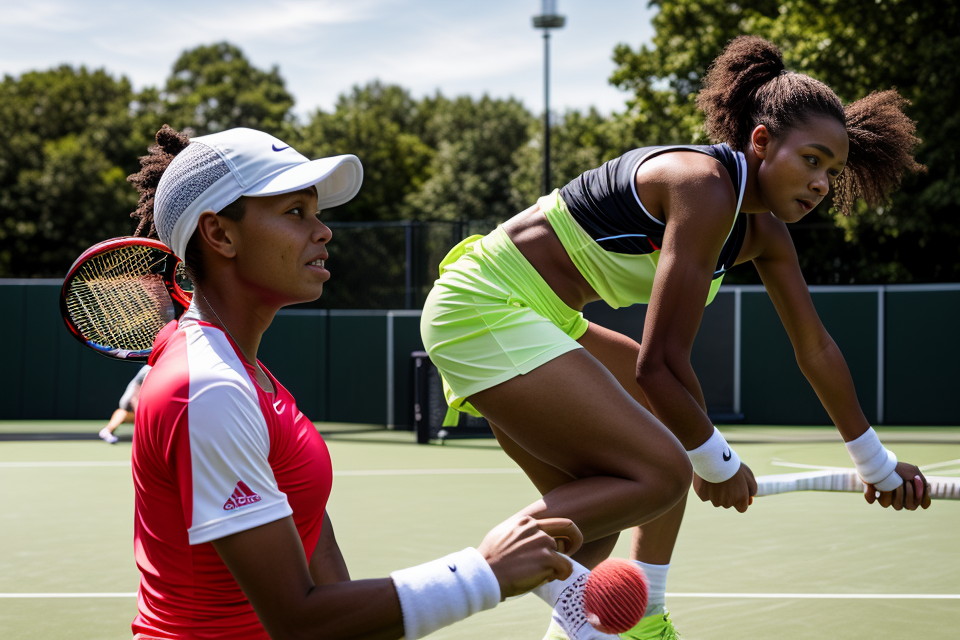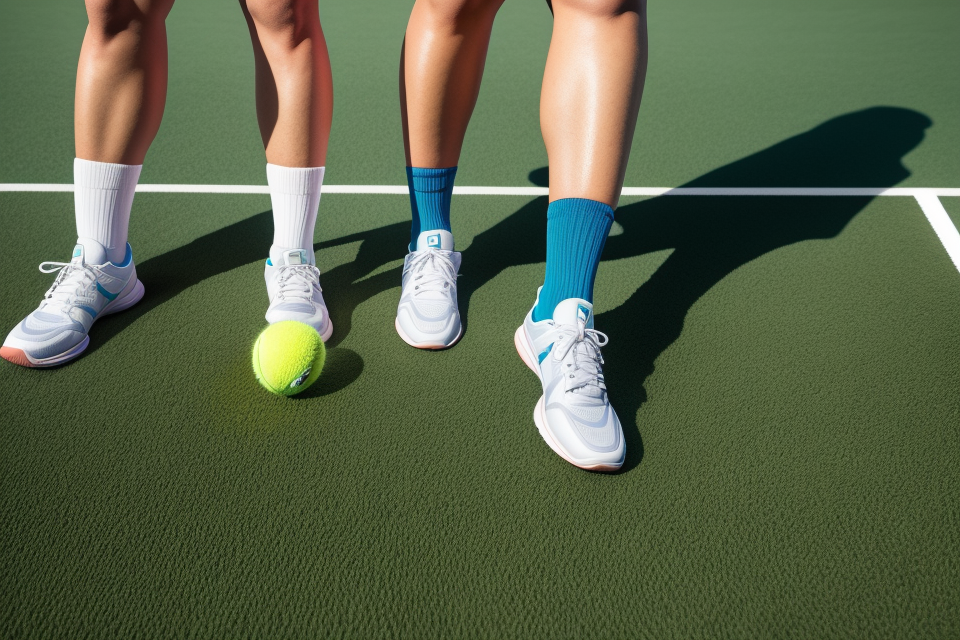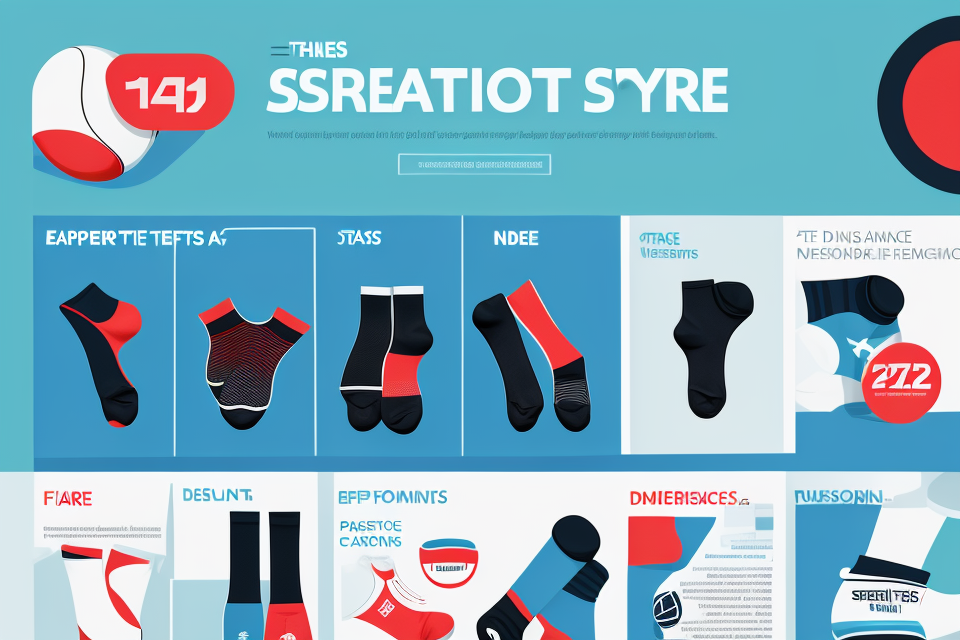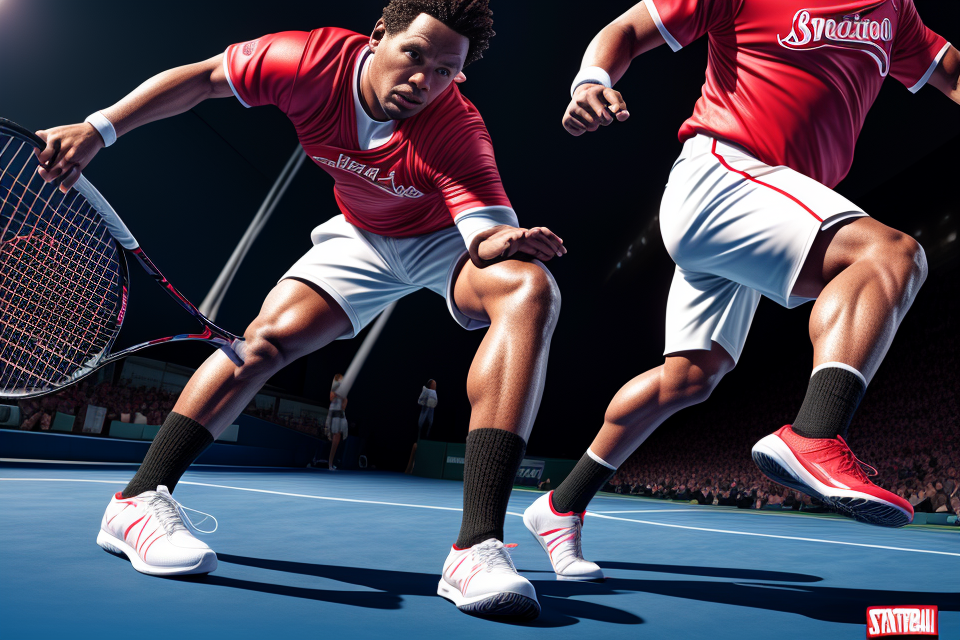Have you ever heard someone say, “You’re too old to learn tennis”? Well, it’s time to debunk that myth! In this article, we’ll explore the realities of tennis training for older adults and show you that it’s never too late to pick up a racquet.
Age is just a number when it comes to tennis. Many people believe that the sport is exclusive to the young and agile, but that simply isn’t true. In fact, tennis is one of the most accessible sports for people of all ages and abilities.
Whether you’re 50 or 80, tennis can be a great way to stay active, improve your physical and mental health, and make new friends. With the right training and guidance, anyone can learn the skills needed to play tennis and enjoy the many benefits it offers.
So, forget what others may say and let’s dive into the world of tennis for older adults. Whether you’re a beginner or a seasoned player, this article will provide you with the information you need to get started or improve your game.
Don’t let age hold you back from enjoying the sport of tennis. Let’s prove that it’s never too old to learn and love tennis!
Debunking the Myths of Tennis Training for Older Adults
Common Myths about Tennis Training for Older Adults
Myth 1: Tennis is a young person’s sport
One common myth about tennis training for older adults is that it is a sport meant for the young. This misconception often leads to older adults believing that they are too old to learn or play tennis. However, this could not be further from the truth.
In reality, tennis is a sport that can be enjoyed by people of all ages, including older adults. With the right training and approach, older adults can learn to play tennis and even compete at a high level. In fact, tennis is one of the fastest-growing sports among older adults, with many people finding joy and fitness in the sport well into their golden years.
Myth 2: Older adults are not flexible enough to play tennis
Another myth about tennis training for older adults is that they are not flexible enough to play the sport. Many people believe that the physical demands of tennis, such as quick movements and agility, make it an impossible sport for older adults to play.
However, this myth is also untrue. While it is true that older adults may have more difficulty with certain movements, such as sudden stops and starts, there are many exercises and training programs available to help improve flexibility and mobility. In addition, many tennis coaches specialize in working with older adults and can help modify training to accommodate any physical limitations.
Myth 3: Tennis training is too strenuous for older adults
A third myth about tennis training for older adults is that it is too strenuous and could lead to injury. Some people believe that the physical demands of tennis, such as running and jumping, are too much for older adults to handle.
However, this myth is also unfounded. While it is true that older adults may need to take extra precautions to avoid injury, tennis can be a safe and enjoyable sport for people of all ages. With proper training and technique, older adults can learn to play tennis without putting undue strain on their bodies. In fact, tennis can be a great way for older adults to stay active and healthy, as it provides a low-impact workout that can improve strength, balance, and overall fitness.
Reality: Tennis Training is Accessible and Beneficial for Older Adults
Benefits of Tennis Training for Older Adults
- Improved Physical Fitness:
- Tennis is a physically demanding sport that requires agility, speed, and endurance. Regular tennis training can help older adults improve their balance, coordination, and overall physical fitness.
- Enhanced Mobility: Tennis involves quick movements and changes of direction, which can help older adults improve their mobility and reduce the risk of falls.
- Stronger Bones: Tennis training can help build bone density, reducing the risk of osteoporosis and fractures in older adults.
- Mental Stimulation:
- Tennis is a mentally challenging sport that requires strategic thinking, decision-making, and problem-solving skills. Regular tennis training can help older adults maintain cognitive function and reduce the risk of age-related mental decline.
- Boosted Self-Confidence: Learning a new sport can be empowering and boost self-confidence in older adults.
- Social Engagement:
- Tennis is a social sport that provides opportunities for older adults to meet new people, make friends, and stay connected with others.
- Positive Impact on Mental Health: Tennis training can improve mood, reduce stress, and provide a sense of purpose and belonging in older adults.
Success Stories: Inspiring Examples of Older Adults Who Learned Tennis
- Age is Just a Number: Successful Tennis Training for Older Adults: This section showcases inspiring examples of older adults who have successfully learned tennis and achieved success in the sport, debunking the myth that 50 is too old to learn tennis.
Tennis Training for Older Adults: Techniques and Programs
Warm-up and Stretching Exercises for Older Adults
The Importance of Warm-up and Stretching Exercises
As one ages, the body becomes less flexible and more prone to injury. Warm-up and stretching exercises are crucial for older adults who want to take up tennis or continue playing the sport. These exercises help to prevent injuries, improve flexibility, and increase blood flow to the muscles, allowing for better performance on the court.
Sample Warm-up and Stretching Exercises for Older Adults
Before starting any tennis training session, it is important to warm up the muscles. This can be done by doing light cardio exercises such as jogging in place or jumping jacks. This gets the heart rate up and the blood flowing to the muscles.
Stretching exercises are also important for older adults. Here are some sample stretching exercises that can be done before and after a tennis training session:
- Hamstring Stretch: Stand with your feet hip-width apart and step forward with one foot. Bend both knees and reach for your toes, keeping your back straight. Hold for 30 seconds and repeat on the other side.
- Groin Stretch: Sit on the ground with your legs spread apart and the soles of your feet touching. Gently press your knees towards the ground until you feel a stretch in your groin. Hold for 30 seconds.
- Quad Stretch: Stand with one foot forward and one foot back. Lean forward slightly, keeping your back straight, until you feel a stretch in your quadriceps. Hold for 30 seconds and repeat on the other side.
- Hip Flexor Stretch: Stand with your feet hip-width apart and shift your weight onto one leg. Bend your front knee and brace your core. Reach for your toes and hold for 30 seconds. Switch sides.
- Shoulder Stretch: Stand with your feet hip-width apart and raise one arm overhead. Reach your hand towards your ear and hold for 30 seconds. Repeat on the other side.
These exercises should be done before and after each tennis training session to prevent injury and improve flexibility.
Fitness and Technique Training Programs for Older Adults
For older adults who are interested in learning tennis or improving their skills, there are a variety of fitness and technique training programs available. These programs are designed to meet the unique needs and abilities of older adults, and can help them stay active, improve their physical fitness, and develop their tennis skills. Here are three examples of fitness and technique training programs for older adults:
- Program 1: Cardio Tennis for Older Adults
Cardio Tennis is a high-energy, fun, and social way for older adults to get fit and improve their tennis skills. This program combines cardiovascular exercise with tennis drills and games, and is designed to be accessible and enjoyable for players of all levels. In a typical Cardio Tennis class, participants might warm up with light jogging or stretching, then move on to drills that focus on footwork, agility, and coordination. They might also play games like mini-tennis or doubles, which help to improve their skills and stamina.
- Program 2: Senior Tennis for Older Adults
Senior Tennis is a program specifically designed for older adults who are looking to improve their tennis skills and stay active. These programs are often offered at community tennis centers or parks, and may include both drills and match play. Senior Tennis programs may be divided into different levels, based on players’ abilities, and may offer a variety of activities, such as team matches, round robins, and social events.
- Program 3: Adaptive Tennis for Older Adults with Disabilities
Adaptive Tennis is a program designed for older adults with physical or cognitive disabilities who want to learn tennis or improve their skills. These programs may be offered at specialized facilities or through local disability organizations, and may include one-on-one instruction, group classes, or individualized training plans. Adaptive Tennis programs may use special equipment, such as wheelchairs or tennis balls with different levels of bounce, to accommodate players’ abilities and needs. They may also focus on developing specific skills, such as hand-eye coordination, balance, and endurance, that are important for players with disabilities.
Overall, these fitness and technique training programs for older adults can provide a fun and supportive environment for learning and improving tennis skills. By participating in these programs, older adults can stay active, build strength and endurance, and enjoy the many benefits of playing tennis.
Tennis Gear and Equipment for Older Adults
Choosing the Right Tennis Racket and Gear for Older Adults
Choosing the right tennis gear is crucial for older adults, as it can significantly impact their performance and reduce the risk of injury. Here are some factors to consider when choosing tennis gear for older adults:
- Comfort: Comfort is a crucial factor when choosing tennis gear for older adults. It is essential to choose gear that fits well and allows for a full range of motion. Ill-fitting gear can hinder performance and lead to discomfort during play.
- Durability: Durability is also an important factor to consider when choosing tennis gear for older adults. As we age, our bodies become more susceptible to injury, so it is essential to choose gear that can withstand the demands of the game. Look for gear made from high-quality materials that can withstand regular use.
- Lightweight: Lightweight gear is also important for older adults, as it can reduce fatigue and improve performance. Choose gear made from lightweight materials that do not compromise on durability or comfort.
- Adjustability: Adjustability is also an important factor to consider when choosing tennis gear for older adults. As we age, our bodies change, and our gear should be able to adapt to these changes. Look for gear that can be adjusted to fit your changing needs.
Recommended Tennis Rackets and Gear for Older Adults:
- Babolat Pure Aero Plus: This racket is designed for players who prefer a more comfortable grip and a larger sweet spot. It is lightweight and easy to maneuver, making it an excellent choice for older adults.
- Wilson Pro Staff Precision 100S: This racket is designed for players who value control and precision. It has a lightweight frame and a comfortable grip, making it an excellent choice for older adults.
- Nike Court Tour: This tennis shoe is designed for players who require excellent support and cushioning. It has a comfortable fit and a durable design, making it an excellent choice for older adults.
- Head Elite 6: This bag is designed for players who require a lot of storage space for their gear. It has multiple compartments and a comfortable shoulder strap, making it an excellent choice for older adults.
Tips for Maintaining Tennis Gear and Equipment
Regular Maintenance of Tennis Gear
- Regular maintenance is essential to ensure that your tennis gear remains in good condition and performs optimally.
- Clean your tennis gear after each use, using a soft brush or cloth to remove dirt and debris.
- Inspect your gear for any signs of wear and tear, and replace or repair as needed.
- Check the tension of your strings regularly, and replace them when they become dull or worn.
Storage and Safety Tips for Tennis Gear
- Store your tennis gear in a cool, dry place, away from direct sunlight.
- Use a gear bag or case to protect your equipment and keep it organized.
- Never leave your gear unattended in public areas, as it may be damaged or stolen.
- Always check the weather forecast before playing, and avoid playing in extreme weather conditions, such as thunderstorms or high heat.
By following these tips, you can ensure that your tennis gear remains in good condition and ready for your next match. Remember, taking care of your equipment is an important part of being a responsible tennis player.
Overcoming Challenges and Injuries in Tennis Training for Older Adults
Common Challenges Faced by Older Adults in Tennis Training
- Physical Challenges
- Decreased strength and endurance
- Loss of flexibility and mobility
- Slower reaction time
- Weaker grip strength
- Difficulty with balance and coordination
- Mental Challenges
- Difficulty with concentration and memory
- Lower motivation and confidence
- Struggling with decision-making on the court
- Difficulty with learning new skills and techniques
- Greater risk of mental health issues such as depression and anxiety.
Preventing and Managing Injuries in Tennis Training for Older Adults
- Preventive Measures for Common Tennis Injuries
Preventing injuries is crucial for older adults who engage in tennis training. One effective measure is to gradually increase the intensity and duration of exercise. Gradual progress allows the body to adapt to the physical demands of tennis and reduces the risk of injury. It is also important to maintain proper technique and form during training to prevent strain on muscles and joints. Additionally, incorporating strength and flexibility exercises into the training regimen can help build a strong foundation for tennis-specific movements, reducing the likelihood of injury. - First Aid and Treatment of Tennis Injuries
In the event of an injury, prompt first aid and appropriate treatment are essential. Common tennis injuries include sprains, strains, and overuse injuries such as tennis elbow and golfer’s elbow. For minor injuries, RICE therapy (rest, ice, compression, and elevation) can be effective in reducing pain and swelling. However, for more severe injuries, medical attention is necessary. Seeking medical advice from a healthcare professional experienced in sports medicine can help ensure proper diagnosis and treatment, including the use of physical therapy and rehabilitation to restore function and prevent future injuries. - When to Seek Medical Attention for Tennis Injuries
It is important to know when to seek medical attention for tennis injuries. If pain or discomfort persists despite rest and simple treatments, medical attention is necessary. Additionally, if there is a significant loss of function or if the injury is accompanied by numbness, tingling, or swelling, immediate medical attention is advised. Ignoring an injury can lead to further damage and prolonged recovery time, so it is important to seek medical attention promptly.
FAQs
1. What is the appropriate age to start playing tennis?
While there is no definitive answer to this question, the typical age for starting tennis is often between 5 and 10 years old. However, the age at which one can start playing tennis varies greatly depending on individual circumstances and personal inclinations. It is never too late to start playing tennis, as many successful professional players have started later in life.
2. Is there an upper age limit for playing tennis?
There is no set age limit for playing tennis, and many professional players have continued to compete well into their 40s and even 50s. As long as an individual maintains a reasonable level of physical fitness, there is no reason why they cannot continue to play tennis.
3. Is it harder for older adults to learn tennis?
Older adults may require more time and effort to learn tennis due to physical limitations that come with age, such as reduced flexibility, slower reaction times, and weaker muscles. However, these limitations can be mitigated through targeted exercise and training programs specifically designed for older adults. With the right approach, older adults can learn tennis just as effectively as younger individuals.
4. How long does it take to learn the basics of tennis?
The amount of time it takes to learn the basics of tennis can vary greatly depending on individual factors such as prior experience with sports, natural athletic ability, and the amount of time devoted to practice. For beginners, it may take several months to a year to develop the necessary skills to play tennis at a basic level. However, with consistent practice and guidance from a qualified coach, one can quickly improve their skills and become proficient in tennis.
5. What are the benefits of playing tennis for older adults?
Playing tennis offers numerous benefits for older adults, including improved cardiovascular health, increased flexibility and mobility, enhanced cognitive function, and a sense of social connection and community. Additionally, tennis can be a great way to maintain physical fitness and mental sharpness as one ages.
6. Are there any special considerations for older adults when playing tennis?
Yes, older adults should take special care to avoid injury when playing tennis. This includes warming up properly before playing, using appropriate equipment, and gradually increasing intensity over time. Additionally, older adults should be mindful of any existing health conditions and consult with a doctor before starting a new exercise program.



